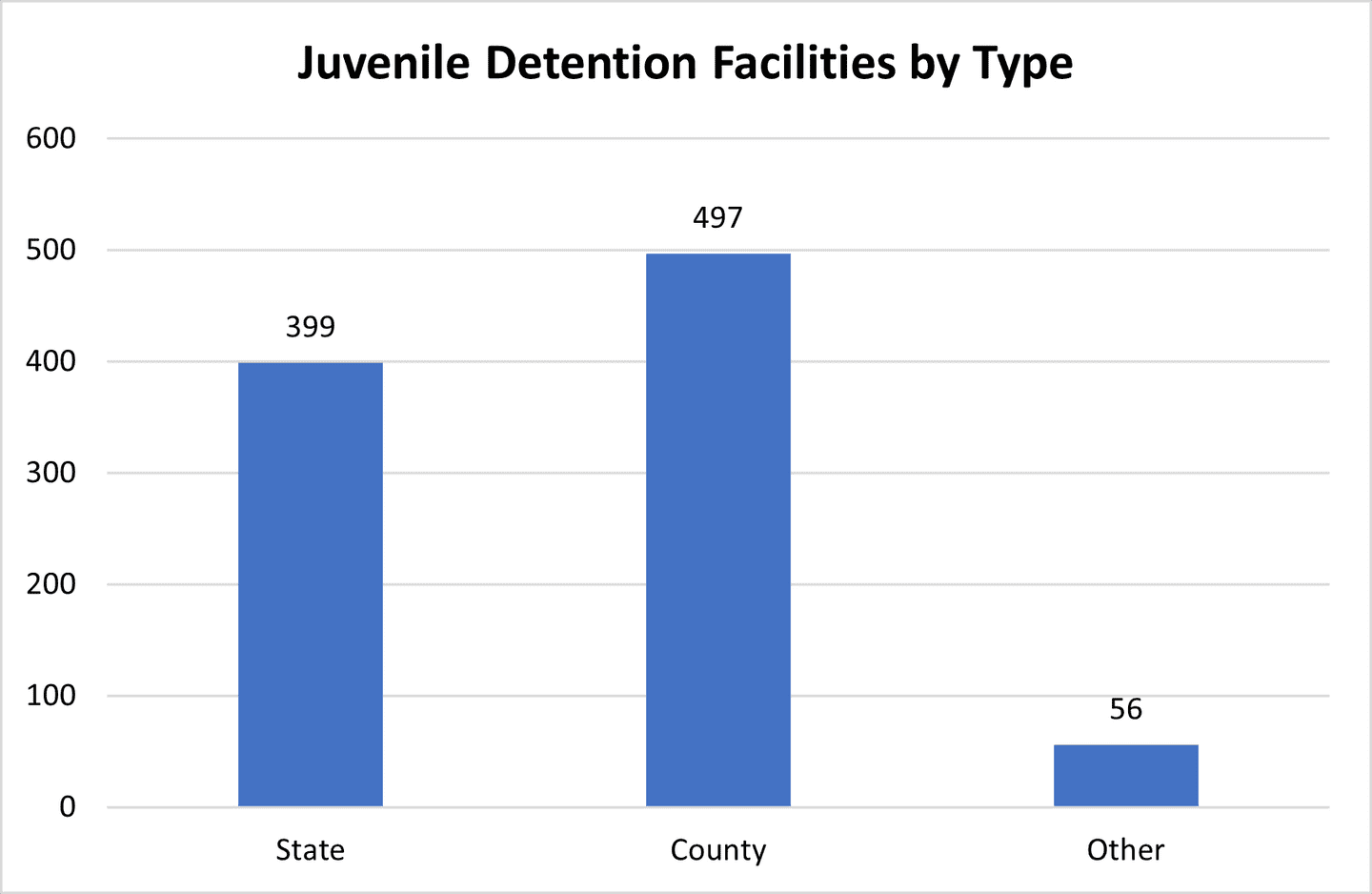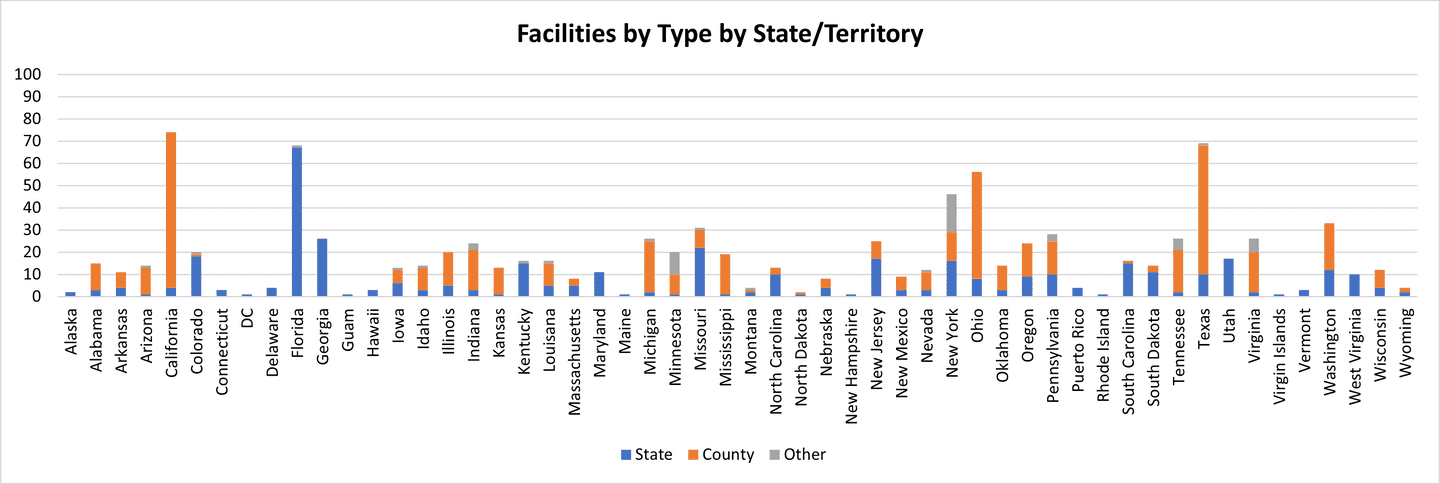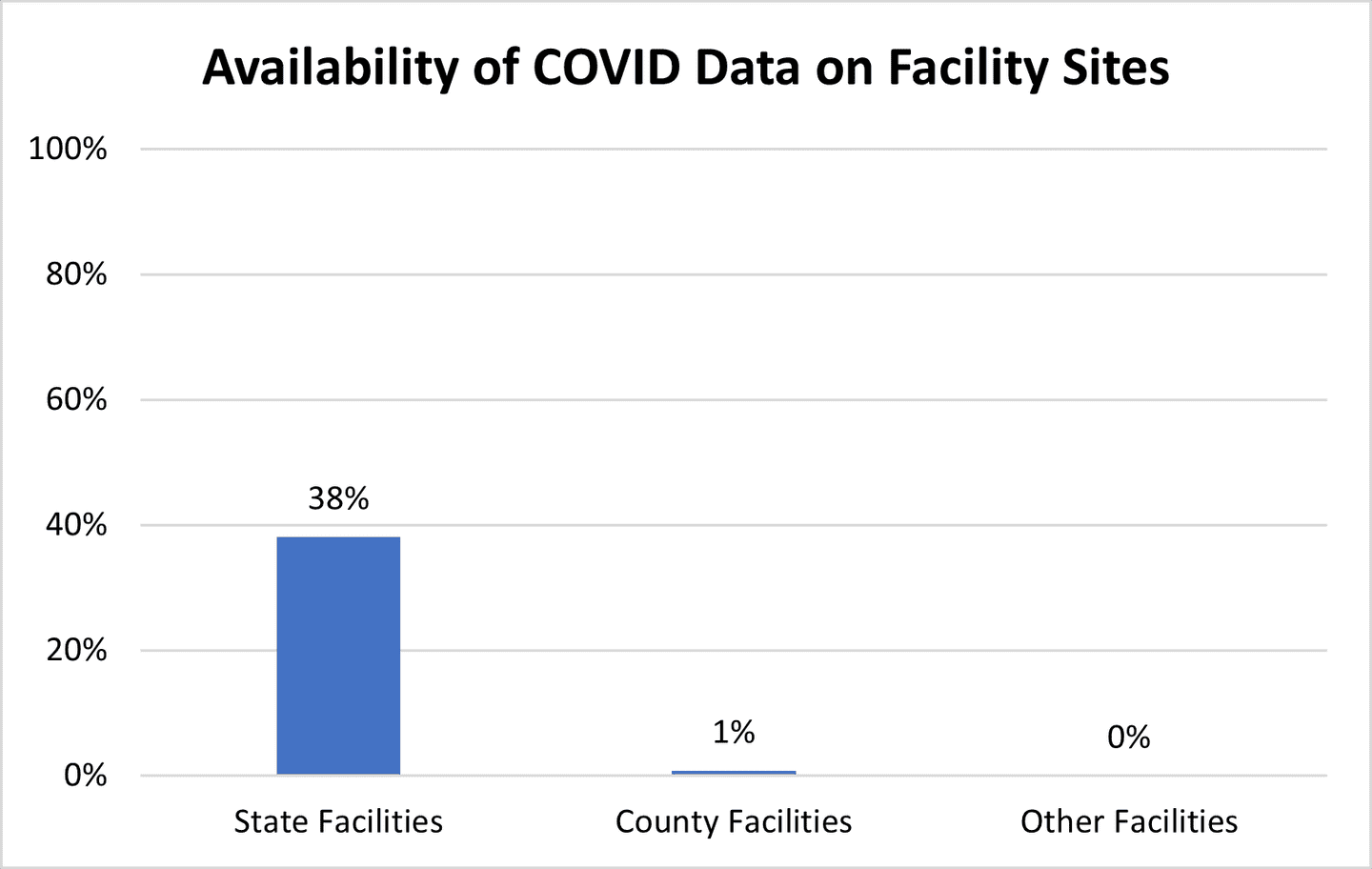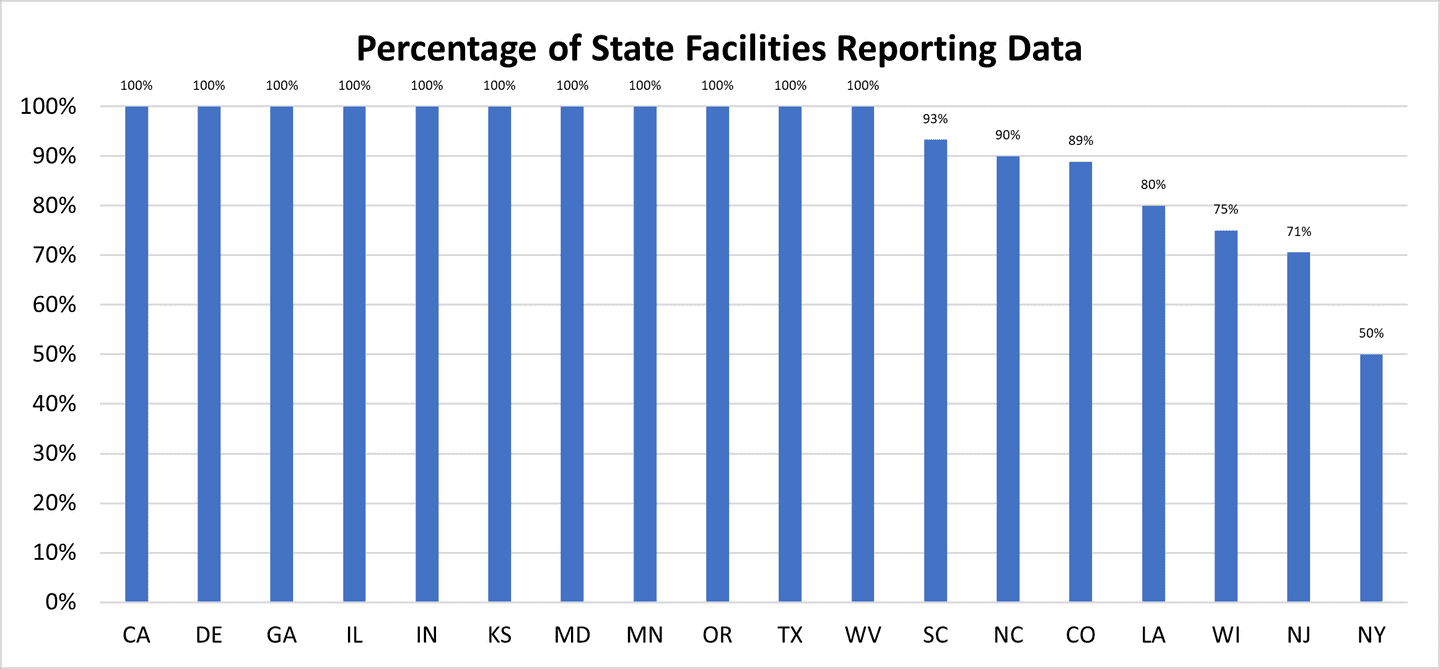October 3rd, 2022 • Elif Yücel
Tracking the Transparency of COVID Data in Juvenile Justice Facilities
Over the past two years, the coronavirus has spread across juvenile detention facilities, infecting thousands of youth and staff. However, just how many youth and staff got sick, we may never know. Since the beginning of the pandemic, youth detention facilities have generally failed to publish testing and infection rates among youth and staff—in fact, to-date, only 16% of facilities nationwide across all facility types have reported COVID data. 1
In efforts to limit transmission, many facilities suspended in-person visitation, restricted youth activities, and tested youth and staff. When the pandemic first began, states and counties issued COVID-responsive guidance and posted facility policies regarding visitation, education, cleaning procedures, and health precautions. As we reported in a separate blog, family members and the public at large were able to track these policy changes when they were posted on agency websites. However, as the pandemic wore on, agencies published fewer policy updates—and, through it all, most of these same agencies never posted any COVID data.
Although most state prison systems have reported data about COVID infections and deaths among adults in custody, youth detention facilities have been much less transparent, leaving the friends and families of these youth without important information about conditions inside.
To address this, the COVID Behind Bars Data Project’s volunteer Youth Team 2 began to track the availability of COVID data in all youth detention facilities across the United States and its territories. First, we created a list of secure juvenile detention facilities using the Department of Homeland Security’s Homeland Infrastructure Foundation-Level Data (HIFLD). These included state, county, and other (generally privately-operated) institutions. We removed facilities that were closed. This resulted in a total of 952 juvenile detention facilities. Figure 1 shows the breakdown of facilities by type across the U.S., while Figure 2 shows the breakdown of facilities by type and state/territory.
Figure 1

Figure 2

We next reviewed the juvenile detention system websites to track whether facilities were reporting data on COVID case counts, testing, and vaccinations for youth and staff. We first used the facility website on file provided by the HIFLD. If the link was broken, we did a Google search for the facility, while also checking the county or state website depending on jurisdiction for facility data. Across the 952 facilities, only 16% (n=156) were reporting COVID data of any kind on their websites. Figure 3 shows the breakdown of COVID data reporting by facility type.
Figure 3

State-operated facilities are doing a much better job at reporting data in their facilities. These data are predominantly reported on the websites of state departments of juvenile justice, which then disaggregate it by facility. Eleven states report complete data across all their state-operated facilities.
Figure 4

However, across the U.S., only four states reported COVID data from all youth institutions—Delaware, Georgia, Maryland, and Wisconsin—although this is mostly due to the fact that the majority of facilities in these states are state-run (with the exception of Wisconsin). South Carolina reported data from 88% of its youth facilities, Colorado from 80%, and North Carolina from 69%. Five states—New Jersey, Oregon, Louisiana, Illinois, and West Virginia—reported data from 25-50% of their youth facilities and seven states—New York, Texas, Indiana, California, Kansas, Minnesota, Washington—reported data from fewer than 25% of their youth facilities. Thirty-one states reported no data from their youth facilities. Guam, the U.S. Virgin Islands, Puerto Rico, and the District of Columbia also did not report any COVID related data from their juvenile detention facilities.
Juvenile facilities under state jurisdiction provided more data than did those under county jurisdiction. Intuitively, this makes sense, as state departments, operating multiple facilities, have stronger infrastructure and larger operating budgets; this allows for increased capacity to both track and update data. Moreover, due to localized and less bureaucratic control, variation among counties within and across states is expected. However, because most youth facilities are county-operated, the pattern of non-reporting by county-run facilities has left the public largely in the dark about COVID outbreaks in juvenile detention centers.
State and county departments of juvenile justice must do a better job of providing information on the spread of COVID in their facilities. County-operated facilities should submit their data to their local health department to publish online, as many departments do. Just as counties have kept track of the spread of COVID in K-12 schools, equal emphasis should be placed on tracking the spread in juvenile justice facilities. As the pandemic continues and new variants arise, the public must be able to access information on the spread of the virus. Given the lack of available data across facilities, the Youth Team has submitted public records requests to the departments governing state-level juvenile justice in all 50 states. As information comes in, we plan to make this data publicly available as well.
Note: After publication of this blog on October 3, 2022, we received updates from individual states about facilities that had closed. To correctly reflect this information, we have struck through those facilities in the dataset and have updated the charts here to reflect the changes. Additionally, we have clarified the relationship between state- versus county-run facilities reporting efforts.
- The facility database was pulled from the HIFLD in November 2021. To our knowledge, the HIFLD database provides the most comprehensive listing of facilities across jurisdictions levels, yet there may still be discrepancies in reporting of facilities. Additionally, since the original data pull, facilities may have shut down or opened. We updated the facility list as we became aware of such closures and openings. The data reported here was compiled over the span of seven months (January-July 2021). Due to websites and information changing over time, there may be some inaccuracies in our reporting. Nonetheless, we have tried to produce a database that tracks the availability of COVID data in all juvenile justice facilities across the United States and its territories.↩
- Many thanks to our team: Anamely Salgado, Ciara Brewer, Dzina Nelson, Elif Yücel, Ian Duke, Jacob Shay, Mariam Diallo, and Talia Proshan.↩
next post
October 18th, 2022 • Baji Tumendemberel and Bennett Stein
21 States and D.C. Have Stopped Reporting Active COVID Cases in Prisons, Despite Active Community Outbreaks
COVID outbreaks are still occurring in communities across the country. But fewer states are reporting COVID cases behind bars.